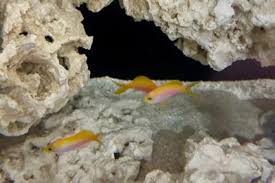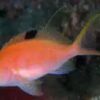Dragons in Traditional Chinese Folk Art

In Chinese culture, the dragon is more than just a mythical creature; it is a profound symbol that plays an essential role in the country’s rich heritage. Known as a symbol of power, strength, and good fortune, the dragon is deeply embedded in various forms of Chinese folk art, which reflect the values, beliefs, and traditions of different communities. These representations of dragons in folk art capture the essence of Chinese culture and have been passed down through generations, continuing to inspire artists and craftsmen today.
This article explores how the dragon has influenced traditional Chinese folk art, from visual arts such as paintings and embroidery to architectural design and festival decorations. We will look at the significance of the dragon in these forms and how it continues to shape the world of folk art in modern China.
1. Dragons in Chinese Folk Paintings
Chinese folk paintings are an essential part of the country’s artistic tradition, often depicting scenes from daily life, historical events, and cultural symbols. Dragons are prominently featured in many of these paintings, especially in those that portray imperial life, traditional myths, and celebratory occasions.
The dragon in folk paintings is often depicted as a fierce, yet benevolent, creature. In these works, the dragon symbolizes prosperity, strength, and good fortune. It is common to see the dragon painted in vibrant, dynamic movements, symbolizing its power to control natural forces, such as water, wind, and fire. The dragon’s depiction is often accompanied by clouds, waves, and other symbols of the natural world, emphasizing its role as a master of the elements.
One of the most famous forms of Chinese folk painting is the “Longhua” (龙画), or dragon painting, which has been historically used to decorate various ceremonial items, including scrolls, walls, and doors. The dragon here is often portrayed in a stylized form, with a long body, a horse-like head, and a majestic appearance, reinforcing its association with divinity and imperial power.
2. Dragons in Chinese Folk Embroidery
Embroidery is another form of traditional Chinese folk art where dragons are frequently featured. Dragon motifs are commonly used in garments, tapestries, and other embroidered items, especially in the clothing worn by Chinese royalty and the nobility.
In Chinese folk embroidery, the dragon is often embroidered using vibrant threads of gold, silver, and silk to reflect its prestigious status and mythical qualities. These designs are usually seen on ceremonial robes, such as the traditional “dragon robe” worn by emperors, which is intricately decorated with dragons as symbols of authority and celestial power. The dragon motifs in embroidery are also used in clothing for common people, with the design often symbolizing wishes for wealth, good health, and a prosperous life.
The “eight-dragon” motif, for instance, is a common embroidery design that represents the eight immortals in Chinese mythology. These designs are typically incorporated into wedding gifts, family heirlooms, and auspicious items that are meant to bring good luck and happiness to the recipient.
3. Dragons in Architecture and Decorative Crafts
Dragons are commonly featured in Chinese architecture and decorative crafts, particularly in structures of importance, such as temples, palaces, and ancestral halls. The dragon has long been associated with imperial power and protection, so it is often used to decorate the roofs, doors, and pillars of these buildings.
In traditional Chinese palaces and temples, the dragon is often carved into wood, stone, and metal, adorning walls, ceilings, and windows. The intricate carvings of dragons can be found on the eaves of roofs, symbolizing the protection of the structure and its inhabitants. These architectural dragons are usually depicted in a majestic and dynamic pose, creating an aura of divinity and power.
Furthermore, decorative crafts such as ceramics, jade carvings, and silk paintings often feature dragon motifs. The famous “dragon and phoenix” design, which pairs the dragon with the phoenix (the symbol of femininity and harmony), is a frequent motif in decorative art, signifying balance and a prosperous union, often used in wedding gifts or family heirlooms.
4. Dragons in Folk Ceramics
Chinese folk ceramics are an excellent example of how dragons are represented in practical yet beautiful ways. Dragons are commonly featured in ceramic pottery, including vases, plates, and teapots. These ceramics serve both decorative and functional purposes, adding a touch of traditional symbolism to everyday life.
In rural areas of China, folk ceramics that feature dragons are often used for rituals and ceremonies. These items might be used in weddings, birthdays, and other celebratory occasions, symbolizing the couple’s wish for prosperity and success. The dragon is often combined with other auspicious symbols, such as the lotus flower (representing purity) or the peony (symbolizing wealth), creating intricate designs that convey blessings for the family.
Folk ceramic artists use a variety of techniques, such as glazing, underpainting, and carving, to bring the dragon to life. The dragon on these ceramics is often depicted in a bold, exaggerated style, with flowing lines that represent its movement through clouds and water.
5. Dragons in Folk Festivals and Decorations
Dragons play a central role in folk festivals throughout China, particularly during the Chinese New Year and the Dragon Boat Festival. These festivals provide an opportunity to celebrate the dragon’s power and significance in Chinese culture.
During the Dragon Boat Festival (Duānwǔ Jié), one of the most popular and ancient Chinese festivals, dragon boat races are held to honor the dragon. Large, elaborately decorated dragon boats race on rivers and lakes, and the boats themselves are designed with the head and tail of a dragon. The dragon boat symbolizes the spirit of teamwork and the energy of the dragon, which is believed to bring good fortune to those who participate.
In addition to the boat races, the dragon is also seen in various decorations during the Chinese New Year. Dragon lanterns, dragon-shaped kites, and dragon-themed street parades are all part of the celebrations, where the dragon is believed to drive away evil spirits and bring good luck and prosperity to all.
6. Dragons in Folk Music and Dance
Dragons also make an appearance in Chinese folk music and dance, especially in performances that celebrate traditional festivals. The “dragon dance” is one of the most famous folk dances performed during Chinese New Year and other important occasions. In the dragon dance, dancers manipulate a long, flexible dragon figure made of fabric and bamboo, creating fluid and energetic movements. The dance is accompanied by drumming and cymbals, believed to attract good luck and drive away evil spirits.
In folk music, the dragon is often symbolized in the melodies and rhythms used during festive performances. The sound of the gong, drum, and cymbals often mirrors the majestic and powerful nature of the dragon, further emphasizing its significance in Chinese cultural expressions.
Conclusion
Dragons in Chinese folk art are not just representations of a mythical creature but are deeply tied to the values, beliefs, and traditions of the Chinese people. From embroidery and paintings to architecture, ceramics, and festive performances, the dragon continues to play a significant role in Chinese folk art, symbolizing prosperity, strength, and good fortune. As this ancient symbol evolves, it remains a central figure in both the everyday and ceremonial lives of the Chinese people, bringing a sense of cultural continuity and artistic richness that has endured for centuries.

